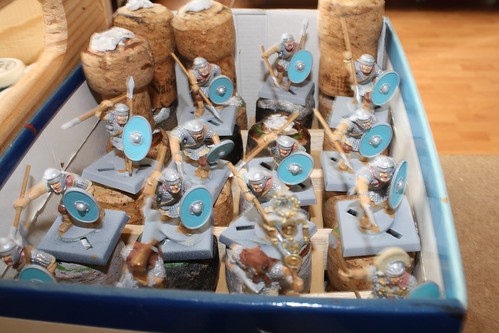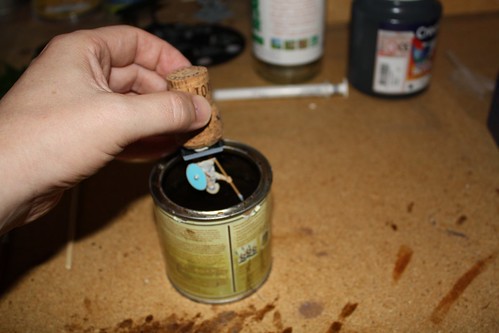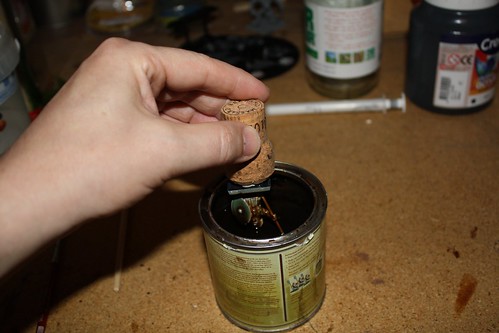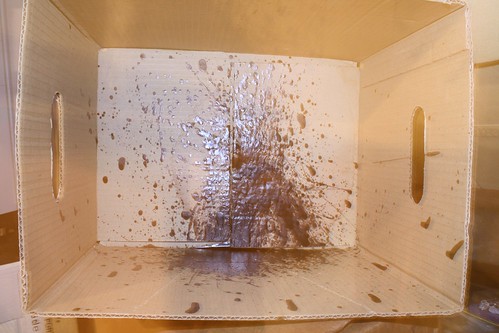During the painting process of the [last batch](http://www.nirya.be/snv/ttm/archives/000346.html) of them I took a few photographs along the way, so I can write a bit of a photo tutorial on the process, which in itself is quite simple (the verb to dip says it all, really).
The first step is painting the miniatures as you would normally do, except that, as we're going to cover them with what is essentially a dark stained varnish, you select lighter colours than you normally would. In my case, I tend to pick the highlight colour of the Foundry triad, or a similarly light valued Vallejo colour. For the auxilia that volunteered to be the subjects of this test, this results in the following paint jobs:

As you can see, the colours are quite light. I've also picked a grey undercoat to work from, as that means that for the vast majority of the areas on the figures, the metal colours, I can get by with a quick drybrush using a silver colour (Vallejo silver in this case). Anything that gains time in this process is good.
Next is the actual dip. There are two main ways of doing this: actually dipping the figures or painting the varnish on them with a brush. Most people on the web use a brush to paint on the stuff because they shudder to think what thick globs of it on the figure might do. I have no such qualms:

When the figure comes out, it looks like this:

It is, of course, covered in thick globs of the Army Painter dip. To remove the excess, I let some of it drip back off into the pot (a few seconds' worth) and then flick off the rest. By that I mean I give the figure about 15-20 good 'shakes' or 'flicks' that throws off the remaining excess. I do this into a cardboard box, that obviously becomes quite covered in the stuff over time:

Try and avoid doing this step anywhere near anything you or anybody else might possibly object to having spattered with dark brown varnish spots, as their *will* be spillage and overshoot.
After a while (a minute or two at most), the figure will look like this:

The dip has magically shaded and highlighted all of the figure, but it also has pooled in a couple of places: under the hand holding the spear and on the bottom of the shield in this case. Other typical places are between legs, on sandals or under lifted arms. These pooled spots have to be removed by a quick swipe with a brush. You don't have to be neat about this - on the shield e.g., swiping the pool away with a brush results in a spot that is now _lighter_ than the rest of the shield (as the staining substance is gone), but this gets solved automagically as the remaining varnish quickly (over the course of a few minutes) reflows and redistributes itself.
The end result is this (after applying shield transfers, which happens after all of the malarkey above has long gone and dried):

And that's all to the dipping method. Take figure, dip, shake, swipe, done!

No comments:
Post a Comment